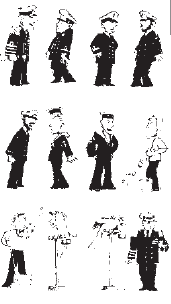4 Levels of systems
You may have noticed that although I chose the ‘higher education system’ as my complex situation, the five systems of interest I have given of that situation are only parts of that complex situation. This relates back to my earlier comments about a hierarchy of (sub-) systems within systems. Kenneth Boulding (1956), an influential early systems theorist, suggested one such hierarchy for systems (or set of layered, nested or interdependent structures) with nine levels of ‘complexity’ as set out in Box 1.
Box 1 Boulding’s hierarchy of systems
- Static structural frameworks, such as bridges and crystals.
- Clock-works with pre-determined motion, such as wind-up toys or the solar system.
- Closed-loop control mechanisms, such as thermostats and automatic regulation in living organisms.
- Simple open systems that are self-maintaining such as living cells, or flames, or the vortex that forms as water flows down a plughole.
- Lower organisms such as plants that have separate organs but have little control over their own development.
- Animals that have a brain to guide behaviour and an ability to learn.
- Humans who exhibit language, self-consciousness, and conscious acquisition of knowledge.
- Socio-cultural systems whose members have different tasks but shared values, and which have a lot of internal communication.
- Transcendental systems such as the idea of God – inescapable unknowables.
Each level contains elements or components (sub-systems, sub-sub-systems, etc.) of all the other levels, but a new type of emergent property appears at that level. So you or I contain examples of all of levels 1-to-6, but also add on the special qualities of level 7. As you move up the hierarchy, complexity increases, in the sense that observers find it harder to predict what will happen. Boulding’s levels 1-5 are subdivisions of what can be called the rational-technical level. This level is often called the mechanistic level. Level 7 is roughly a personal level, 8 includes the wider environment level, and 9 the spiritual side to our lives.

